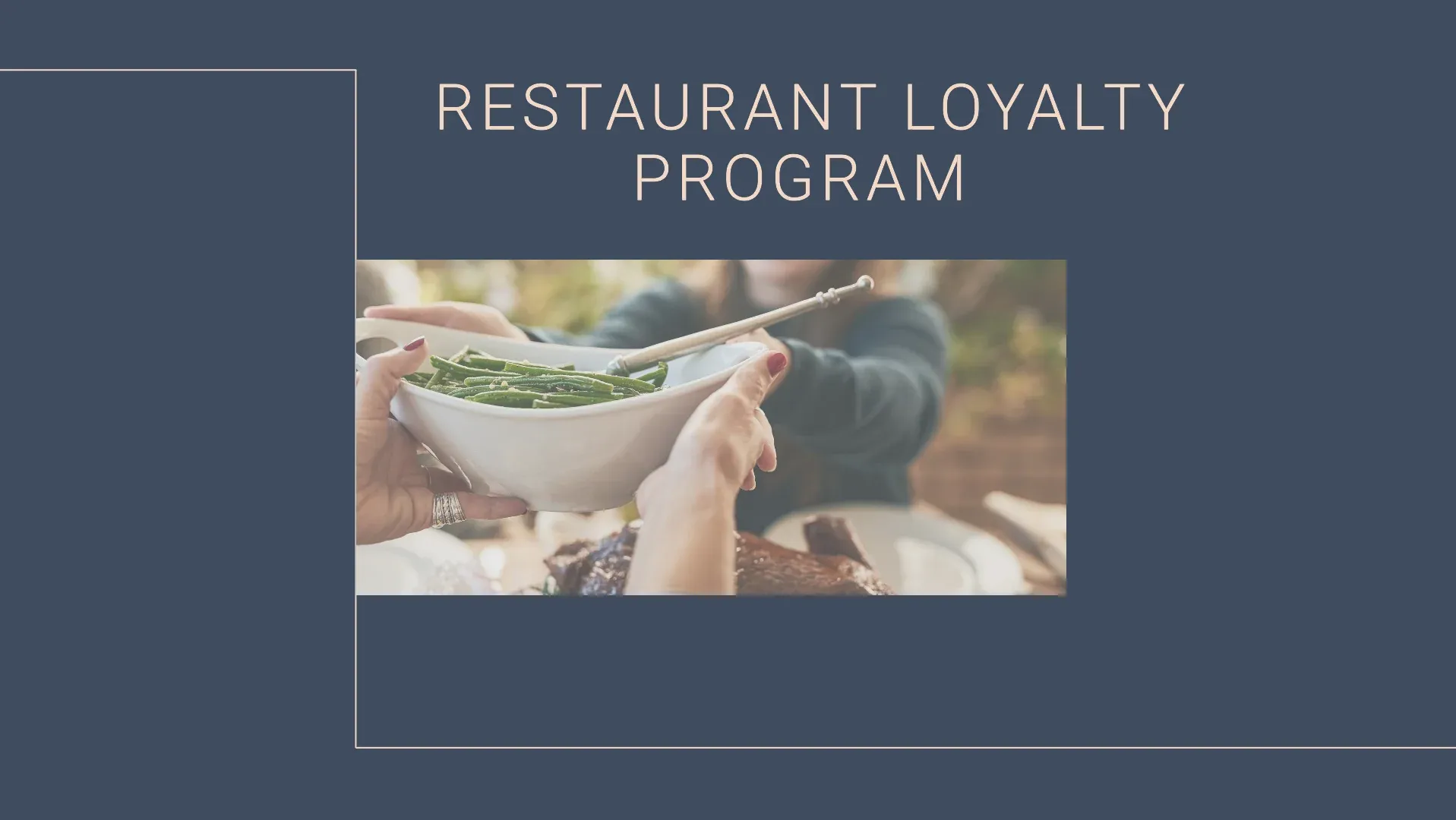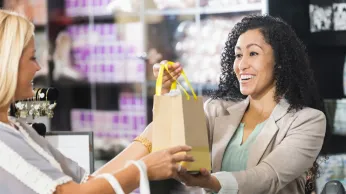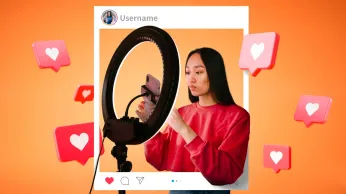What is a Restaurant Loyalty Program and How to Create One?
Restaurant loyalty programs go beyond discounts—they foster connection, drive repeat business, and boost engagement. This guide explores top program types, creative reward ideas, best practices, and real-world examples to help you design one that works.
On this page
Why do certain restaurants consistently draw crowds and enjoy loyal customers? The answer often lies in well-crafted loyalty programs. These initiatives go beyond serving delicious food; they build a bond between the restaurant and its patrons, encouraging repeated visits and fostering a sense of belonging.
Restaurant loyalty programs are designed to create a rewarding experience for diners, turning casual customers into enthusiastic regulars. They offer tangible benefits like discounts, exclusive offers, or redeemable points that add value to each visit.
For restaurant owners, these programs are an opportunity to engage customers more deeply and grow their business effectively.
As the restaurant industry evolves, loyalty programs are becoming an essential part of delivering satisfaction, one meal at a time.
What is a restaurant loyalty program?
A restaurant loyalty program is a marketing strategy for restaurants designed to encourage repeat business from customers by rewarding them for their loyalty.
These programs typically involve customers signing up for a membership or loyalty card, which allows them to accumulate points, earn rewards, or receive discounts based on their purchases at the restaurant.
Here's how it typically works:
- Membership sign-up: Customers enroll in the loyalty program either through a physical loyalty card or digitally through an app or website.
- Earning points: Customers earn points for every purchase they make at the restaurant. The number of points earned usually corresponds to the amount spent.
- Reward tiers: As customers accumulate points, they can reach different reward tiers. Higher tiers often come with more significant rewards or perks.
- Redeeming rewards: Customers can redeem their accumulated points for rewards such as discounts on future purchases, free meals, exclusive offers, or merchandise.
- Special promotions: Restaurants may offer special promotions or bonuses to loyalty program members, such as double points days or birthday rewards.
- Data collection: Loyalty programs also provide restaurants with valuable data about their customers' preferences, spending habits, and frequency of visits, which can be used to tailor marketing efforts and improve customer satisfaction.
Restaurant loyalty programs aim to foster a sense of appreciation and connection with customers, ultimately leading to increased customer retention and revenue for the restaurant.
8 Best restaurant loyalty program ideas
Here are 8 best restaurant loyalty program ideas that you can consider implementing if your business is struggling.
1. Item-based rewards
- Free appetizers or desserts: Offer a free appetizer or dessert after a certain number of visits to your restaurant. For example, after every 5 visits, the customer gets a free dessert.
- Buy One, Get One Free: After several purchases, offer a "buy one, get one free" deal on specific menu items. This encourages customers to try more items on the menu and come back more often.
2. Incentives for promotion
- Referral bonuses: Reward customers who bring their friends to your restaurant. If a customer refers to a friend who joins the loyalty program, both the referrer and the friend get a discount or a free item.
- Social media sharing: Give rewards to customers who share their dining experience on social media and tag your restaurant. This could be a discount on their next meal or a free item, helping to promote your restaurant to a wider audience.
3. Subscription rewards
- Monthly meal plans: Offer a subscription service where customers pay a monthly fee and receive a set number of meals or special discounts. This ensures regular business and provides customers with good value for their money.
- Special access: Provide subscribers with early access to new menu items, special events, or exclusive deals. This makes them feel valued and gives them a reason to maintain their subscription.
4. Online incentives
- Online ordering discounts: Offer a discount to customers who place their orders through your restaurant’s website or app. For example, give a 10% discount on their first online order.
- Digital punch cards: These cards use an app to track visits and purchases. After a certain number of online orders, customers can earn a free item or discount, similar to a traditional punch card but more convenient.
5. Point-based rewards
- Points for every purchase: Give customers points for every dollar they spend at your restaurant. For example, earn 1 point for every dollar, and after collecting 100 points, they can redeem them for a free meal or discount.
- Bonus points: Offer extra points for certain actions, like ordering specific items, visiting during off-peak hours, or celebrating their birthday at your restaurant. This encourages more frequent visits and higher spending.
6. Free delivery
- Free delivery for members: Provide free delivery for loyalty program members on orders over a certain amount. This makes it more attractive for customers to join your program and order regularly.
- Exclusive delivery deals: Offer special discounts on delivery orders for loyalty members, such as a percentage off their total bill or a free item with their order. This encourages customers to choose your restaurant for their delivery needs.
7. Experiential rewards
- Cooking classes: Invite loyal customers to exclusive cooking classes where they can learn how to make their favorite dishes from your menu. This creates a memorable experience and strengthens their connection to your restaurant.
- Chef’s table experience: Offer top-tier members a special dining experience with the chef. They can enjoy a unique meal prepared just for them, which makes them feel special and appreciated.
8. Secret menu
- Exclusive items: Create a secret menu with special dishes or drinks that only loyalty program members can order. This adds a sense of exclusivity and makes members feel like they’re part of an insider’s club.
- Limited editions: Offer limited-time dishes or drinks that are available only to loyalty members. This can generate excitement and encourage more people to join your loyalty program to access these special items.
9. Tier-based
Tier-based rewards programs incentivize customers based on their spending level.
- Bronze – Basic perks and access to member-only promotions
- Silver – Birthday rewards or early access to new products
- Gold – Exclusive events or experiences
- Platinum – VIP access to events and experiences
Then, the “Diamond Level” tier—the highest level—is where customers can earn exclusive discounts for the most expensive products or experiences after spending the target amount within months or a year.
This type of rewards program motivates customers in lower tiers to reach the next level of spending. The more exclusive the perks, the more desirable they can become, driving higher revenue.
This program offers three tiers: Insider, VIB, and Rouge.
These tiers have the same benefits except for seasonal savings events, point multipliers, Rouge rewards, and exclusive gifts. Also, some perks are exclusive to Sephora stores in Kohl’s in the United States and on Kohl’s website.
10. Cashback
Cashback rewards programs are incentives where a percentage of the amount spent is returned to customers.
These perks can be directly deposited into customers’ bank accounts, applied as credit for subsequent purchases, or used to redeem points.
Payment channels like PayPal offer unlimited cashback on eligible purchases using credit and debit cards. Customers can combine these rewards with merchant promos and apply them to purchases to earn more cashback.
Moreover, customers can unlock more exclusive cashback promos the more they pay using PayPal.
11. Mission-based
Mission-based rewards programs are ideal for advocacy-driven consumers.
These programs aim to reward customers for contributing to causes. You create programs where a percentage of purchases goes directly to charities of your choice, which can be more effective when you partner with non-profit organizations that align with your mission.
For every Charity Pot Body Lotion purchase, Lush donates 100 percent of the price (minus the taxes) to small grassroots human rights, animal protection, and environmental justice organizations. Customers, therefore, get velvety, beautifully scented skin while contributing to the common good.
12. Spend-based
Spend-based rewards programs recognize customers with high spending levels. The more they spend, the more perks and discounts they can earn.
With this card, customers earn miles based on their purchases.
-Delta purchases – 3X miles
-Hotel purchases – 3X miles
-Restaurant purchases, including delivery and takeout in the U.S. – 2X miles
-Groceries – 2X miles
-Per dollar on other purchases – 1X miles
13. Referral
Referral rewards programs encourage customers to refer their friends and family to earn incentives.
These word-of-mouth marketing techniques help you acquire new customers and foster loyalty among existing ones. Plus, the referred customers may even introduce your brand to someone else.
At the same time, you can reduce your customer acquisition costs because existing customers remain loyal while actively finding new customers for you.
This program works by filling out the sign-up form and sharing unique referral links and promotional codes.
Benefits of including rewards
With the correct implementation, rewards programs can bring the following benefits to your restaurant:
1. Encourages repeat business
The most common benefit of rewards programs is repeat business. Because of the incentives, you entice your diners to stay with your restaurant and make more purchases.
2. Builds lasting customer relationships
Rewards programs go beyond transactional interactions.
As such, you can build lasting customer relationships because you value your diners’ continued support, strengthening their emotional connection with your brand.
3. Promotes word-of-mouth marketing
Rewards programs are a form of word-of-mouth marketing.
Your existing diners can inform their loved ones about the rewards they receive from your restaurant.
With referral programs, they can even earn perks from referring new customers. New customers can also save costs by receiving initial discounts on their first purchases, creating a win-win situation for you and your existing and new diners.
4. Show appreciation to customers
Rewards programs are a way to show customer appreciation.
With personalized incentives, you can make your patrons feel uniquely valued, encouraging repeat purchases and deeper engagement with your brand.
Best practices for designing a restaurant loyalty program
Here is how to design a successful restaurant loyalty program.
1. Understand your customer base and define program goals
To design a successful restaurant loyalty program, it's crucial to understand your customer base. This involves analyzing their preferences, demographics, and spending habits. By understanding what motivates your customers, you can tailor your loyalty program to meet their needs better and increase engagement.
Before building a rewards program, define your program goals. Use the following questions as your guide:
- What does the program aim to achieve for your restaurant?
- What actions do you want to encourage? (e.g., frequent visits, higher spending, or social sharing)
- What are the most appealing rewards to your customers?
- What systems or technologies will you need to support reward tracking and redemption?
- How will you ensure compliance with laws regarding consumer privacy and protection?
- What are your target Objectives and Key Results (OKRs) and Key Performance Indicators (KPIs)?
Afterward, conduct market research to understand your target audience. This research helps you identify loyalty motivations and choose a program that resonates with these behaviors.
2. Choose the right rewards and type of program
The rewards and incentives you offer play a significant role in the success of your loyalty program. Choosing rewards that are valuable to your customers and align with your brand is essential.
This could include discounts, free items, exclusive offers, or VIP experiences. By offering meaningful rewards to your customers, you can encourage repeat visits and build loyalty.
Once market research is complete, choose the appropriate type of rewards program based on the results. Here are some examples based on customer behaviors and interests:
- Point-based programs with discounts or cashback rewards work best if you have price-sensitive diners.
- Tier-based programs with exclusive perks like appetizers and dining experiences are best for frequent visitors.
- Mission-based programs are best for eco-conscious diners who constantly bring reusable items like containers, tumblers, and metal straws.
- Spend-based programs with discounts and vouchers are best for diners willing to spend a predetermined amount.
- Subscription programs are best for diners who love monthly deals and free deliveries.
- Referral programs are best for customers who love sharing about your brand.
3. Design a compelling and intuitive program
A compelling and intuitive program helps increase conversions and retention. To ensure your program is straightforward to understand and participate in, follow these tips:
- Avoid complex and confusing terms and conditions
- Ensure the steps’ explanation and navigation are consistent across your platforms
- Use infographics to explain the program
- Provide a simple sign-up process
- Implement a responsive design that responds to different device sizes (e.g., desktop, tablet, and mobile devices)
Also, integrate technological mechanisms like restaurant POS systems with rewards support to manage your rewards program and boost participation. These tools help ensure a smoother transaction process, track customer engagement, and tailor the program to your diners’ needs.
4. Integrate gamification ai elements
Gamification AI integrates intelligent technologies to make rewards programs more adaptive, engaging, and personalized. This fusion lets you create responsive experiences tailored to diner preferences.
Gamification AI enables you to implement elements like badges, challenges, games, and levels to motivate customers to participate and earn rewards.
For instance, you can use gamification AI to create a program on your mobile app where diners earn badges for trying different menu items. You can also provide virtual stamp cards for frequent visitors.
Customers who earn badges and stamps unlock levels with exclusive perks, such as free desserts or private tasting events. The AI then analyzes customer patterns and preferences to offer more personalized challenges, making the program more interactive.
5. Market and promote the program effectively
A key aspect of designing a successful restaurant loyalty program is effectively marketing and promoting it to your customers. This could include using email marketing, social media, in-store signage, and other channels to promote the program and encourage sign-ups. It's also important to regularly communicate with your members and keep them engaged with the program.
Once the program is ready, promote it across your channels, such as your social media profiles, brick-and-mortar store, and mobile app, to reach different customer touchpoints.
6. Measure performance, evaluate, and update as needed
To ensure the success of your loyalty program, it's important to evaluate its performance and make adjustments as needed continuously. This could involve analyzing customer feedback, tracking program metrics, and identifying areas for improvement.
By staying proactive and making adjustments based on customer feedback and data, you can ensure that your loyalty program remains effective and continues to drive customer loyalty.
You can make data-driven adjustments to optimize the program’s impact and efficacy by tracking performance. You can also find areas for improvement in customer engagement, conversion, and retention rates, ensuring your program’s lasting success.
Best restaurant loyalty program examples
Here are 2 examples of businesses that have successfully implemented a restaurant loyalty program:
1. Chipotle rewards program
Chipotle Mexican Grill, often simply called Chipotle, has established itself as a prominent player in the fast-casual dining scene, particularly in the United States. Known for its focus on fresh, high-quality ingredients and customizable menu options, Chipotle has garnered a loyal following since its inception.
Here is how loyalty rewards company helped Chipotle to significantly enhance the digital transformation through innovative modifications to their CRM and loyalty programs. The goal was to grow the Chipotle Rewards membership and boost digital ordering, resulting in impressive growth from 8 million to 32 million members in just two years.
Challenges
Before the initiative, Chipotle shifted its business model towards digital engagement to adapt to changing consumer behaviors and expectations.
The existing loyalty program did not incentivise repeat visits or engage users meaningfully.
There was a need to utilize customer data better to create personalized experiences and enhance customer retention.
Solutions
The loyalty rewards company redesigned the loyalty program to make it more engaging. They introduced the Rewards Exchange, which allows members to redeem points for food, gear, or charity donations.
To further incentivize customer behavior, "Extras" were introduced. These badges reward customers for digital ordering, frequent visits, or participating in special events such as the Boorito.
Leveraging deeper customer data, the program began offering more personalized journeys triggered by specific customer behaviors to predict and react to shifts in their engagement.
Results
The membership base grew impressively from 8 million to 32 million within two years.
The introduction of personalized rewards and interactions based on customer behavior and preferences led to a 724% ROI on key campaigns.
The new program structure led to over 28.7 million reward redemptions, indicating high customer engagement and satisfaction.
2. Pancheros' "Burritos with Benefits" rewards program
Pancheros, a popular Mexican grill, implemented its "Burritos with Benefits" rewards program to enhance customer retention and engagement using the Punchh platform. This case study explores the challenges faced, the solutions implemented, and the results achieved through this initiative.
Challenges
Pancheros faced several key challenges:
As consumer behavior shifted towards online ordering, Pancheros needed to enhance its digital presence to meet customer expectations and remain competitive.
Strengthening customer loyalty was crucial, especially in the competitive fast-casual dining market.
Effectively using collected customer data to personalize marketing efforts and improve the customer experience was a significant challenge.
Solutions
To address these challenges, Pancheros implemented several strategic solutions:
By integrating the Punchh platform, Pancheros enhanced its loyalty program, allowing for better customer data analysis and targeted marketing strategies.
Pancheros introduced a dedicated mobile ordering line and integrated digital promotions to facilitate and encourage online ordering.
The loyalty program was revamped to include more personalized rewards, leveraging customer behavior data to offer tailored promotions.
Results
The implementation of these solutions led to impressive results:
The retention rate soared to 47% in Q3 2023, significantly above the industry benchmark of 33%.
Loyalty sales saw a 15.16% increase year-over-year, demonstrating the enhanced effectiveness of the loyalty program.
The loyalty program's participation rate reached 23% in Q3 2023, indicating a higher level of customer engagement.
Enhance restaurant loyalty programs with Loyalife
Restaurant loyalty reward programs have long been effective in building meaningful, lasting relationships with diners and fueling business growth. But to truly stand out in a competitive landscape, you need more than just a basic points system—you need personalization, precision, and a platform that keeps pace with evolving customer expectations.
Loyalife is designed to help restaurants do just that. It goes beyond generic rewards to deliver tailored experiences that resonate with every guest—whether they're dining in, ordering takeout, or engaging through your mobile app.
With Loyalife, you can:
- Build personalized loyalty programs that reward visits, spending behavior, or special moments like birthdays and anniversaries.
- Launch targeted campaigns such as dish-based discounts, limited-time offers, and referral bonuses that drive footfall and frequency.
- Offer diverse rewards through a marketplace of gift cards, curated dining experiences, and exclusive access perks that feel fresh and exciting.
- Ensure operational security with built-in fraud prevention, points capping, and transparent redemption tracking.
- Set up and modify rules for accrual, redemptions, and tiers easily, based on marketing strategies or seasonal offers.
- Localize your customer experiences with multiple languages and currencies for deeper engagement.
- Increase customer engagement with elements like challenges, leaderboards, and badges for milestones
- Deliver a consistent omnichannel experience across all touchpoints—from dine-in to delivery.
- Seamlessly integrate your CRM, marketing and partner management tools, and others with our loyalty engine
Whether you're running a café, fine-dining restaurant, or QSR chain, Loyalife helps you design loyalty programs that are not only engaging but also scalable, data-driven, and future-ready.









